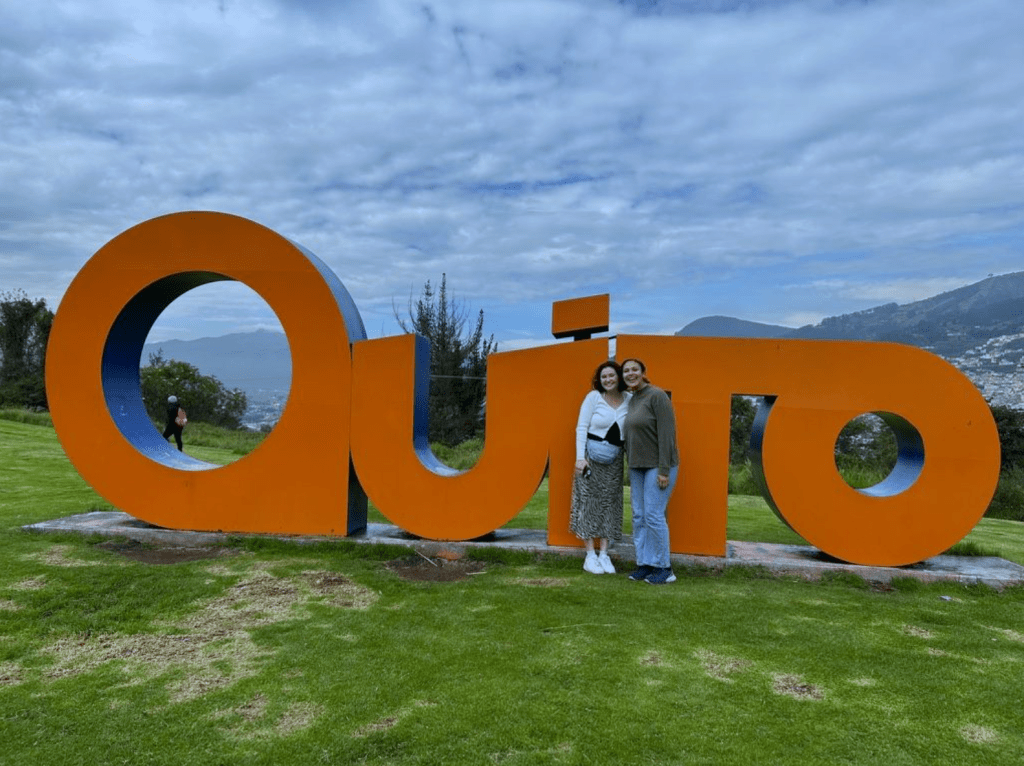Maddie Moves to Ecuador!
Hi everyone, and welcome to the second installment of my sustainability blogging series—this time, though, coming to you from South America! For those of you who don’t know me, my name is Madeline “Maddie” Hahm, and I am currently a senior at Amherst studying Spanish Language and Culture. In order to fulfill some of my major requirements and also finally cross the threshold between being “proficient” and “fluent” in Spanish, I decided to embark on an eight-month adventure this past year, spending time in two Spanish-speaking countries in order to learn more about their cultures, language, and ways of life. As some of you may already know, I began the academic year in Spain, studying with the Middlebury Language Schools in order to improve my Spanish before heading to Ecuador, where I participated in a semester-long marine ecology research program. (If you haven’t already, I would highly recommend checking out my sustainability posts from my time in Spain where I delved into issues of carbon emissions, traffic, wildfires, and air pollution in Madrid.) Otherwise, sit back, relax, and get ready to switch gears and continents with me as I begin to examine the question of sustainability in Ecuador.

A photo taken of me with my very first friend on the program, Stephanie, as we stand in front of the Quito sign in the country’s capital.
Though Ecuador and Spain share a language and have some overlap in their histories, for the most part, the two countries could not be more different. I, somewhat naively, had assumed that transitioning to South America from Europe wouldn’t be too difficult after spending the fall studying in Spain with Middlebury, especially since my Spanish was now good enough to hold a fluent, face-paced conversation without issue. I had survived going abroad once, and, if I could do that, I was sure I could do it again. Of course, what I quickly grew to realize was that I needed more than simple Spanish proficiency to prepare me for the cultural adjustments I would soon be facing. For instance, in Spain, most people take public transportation, regularly eat paella, and use the incredibly-Spanish expression “que guay” to express when things are good or cool. Meanwhile, in Ecuador, public buses are definitely a safety hazard, paella is replaced by bolón or ceviche as the most beloved dishes, and nobody says “guay.”1 Instead, you’ll hear words like “chevré” or “bancán.”
Similarly, Ecuador also faces different sustainability issues. While in Madrid, I was primarily observing traffic conditions and air pollution throughout the city since that was the most-pressing environmental problem I could see. However, in Quito (and later the Galápagos), I noticed that the country approached sustainability challenges in a different manner. Something unique about Ecuador and its government is that, back in 2008, the country actually amended its constitution to afford protection and rights to nature under the law, writing that it should be able to “exist, persist, and be respected.”2 This was a completely unprecedented action, as no country before had ever done something similar though it made sense given that Ecuador is one of the most biodiverse countries in the world.3 Having a variety of different biomes within its borders (including the Amazon Rainforest and the Galápagos Archipelago) induces the country to be more protective of its flora and fauna.
Already, it seemed to me like Ecuador was much more environmentally conscious than Spain, meaning that I would have many more options when it came to researching its sustainability work. Thus, I decided it would be best to divide my blog posts into four different sections based on the four locations where I would be studying in Ecuador throughout the spring: Quito, a large city in the Andes Mountains and the country’s capital; the Ayampe Province, an area along the Ecuadorian coast; the Amazon Rainforest; and the Galápagos Islands, where I would be spending the majority of my time.
Over the next four blogging installments, I will be delving into varying sustainability issues depending on the location, as they differed greatly from one another. In Quito, like in Madrid, I’ll be examining air pollution. Then, we will hop over to the coast to observe the fishing communities and the consequences of overfishing. In the Amazon, I’ll examine the nature of poaching and drilling for oil. Finally, we will turn our sights to the famous Galápagos Islands where increasing pressure from tourism has begun to take a drastic toll on the archipelago. It has been an incredible experience to be able to learn from these four, distinct biospheres, and I hope you will learn a lot from the literary journey as you continue to read along. I know I did.
Saludos,
Maddie
Links:
1https://www.rainforestcruises.com/guides/ecuadorian-food
2https://digitalcommons.law.uw.edu/wilj/vol20/iss3/8/ 3https://www.biofin.org/ecuador#:~:text=Ecuador%20is%20considered%20one%20of,of%20all%20species%20repo rted%20worldwide.